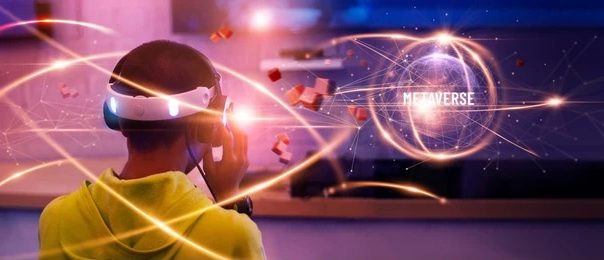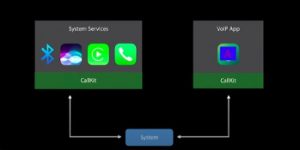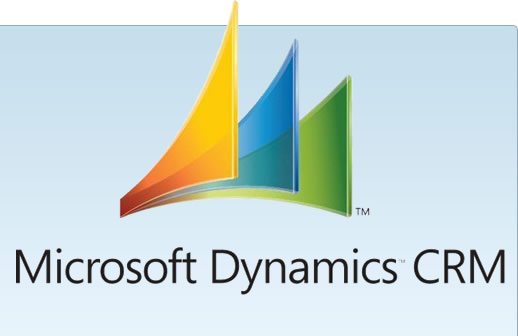Introduction:
Since time immemorial, humans have been imaginative and have always envisioned new concepts, such as superheroes or aliens. However, the most recent obsession among innovators is immersive technology, i.e., integration of virtual content with the physical environment, with about 6.3 billion dollars in revenue generated in 2020. This is evident from the popularity of Nintendo’s Pokémon Go game and IKEA Place.
Escalated by the post-pandemic environment, rapid digitalization and increased reliance on smart devices have led businesses to look for ways to cater to people using immersive applications. Immersive applications improve processes by bringing digital elements for better visualization, increasing user experience that translates to profitability.
Immersive applications actualize distinct experiences by integrating the physical world with a simulated reality. These technologies allow humans to have new experiences by enhancing, extending, or creating a mixed reality.
Among the different types of immersive technology are Augmented Reality (AR), 360, Extended Reality (XR), Mixed Reality (MR), and Virtual Reality (VR). The augmented and virtual reality market will surge into the market size of 160-billion-dollars by 2023, according to Statista’s forecast. Consumers’ attraction to immersive applications is visible by the increasing market size encouraging developers to offer relevant solutions.
Developers can create AR application for Apple products using various tools, frameworks, and languages including, but not limited to Xcode, ARKit, RealityKit, Swift, and AR creation tools.
This article involves understanding the efficacy of Swift in AR technology for developing immersive applications for business initiatives. Prior to that, it is crucial to comprehend AR and its effect on immersive applications.
Augmented Reality Apps and Its Applications
AR works by layering a digital layer on top of the real world and enhancing the user experience. The digital layer or augmentation consists of information or content consisting of videos, images, and 3D objects, providing a naturally semi-immersive and visual experience for user interaction.
AR has unlimited scope for innovation due to its non-restrictiveness of user vision, cost-effectiveness, and high engagement. Mobile AR users are expected to surge from 200 million in 2015 to 1.7 billion worldwide by 2024.
AR Application across industry verticals:
Apps use augmented reality to bring products to life by using 360-degree views either with headsets or through smartphone cameras.
- Automotive Industry is using AR for designing, testing, and sale of vehicles saving much money and improving products simultaneously, e.g., Jaguar Land Rover, BMW Virtual Viewer, Hyundai AR Lens for Kona.
- The real estate industry is being transformed by using AR technology and is bringing the advantage of viewing properties from people’s homes.
- The tourism industry uses AR technology to provide users with amazing experiences of the various vacation locations, e.g., World Around Me, Viewranger, Smartify, AR City, Guideo, Buuuk.
- AR provides simulation of work areas and models to help healthcare professionals familiarize themselves. This helps them to work on real patient bodies expertly.
- Users can experience an immersive experience in retail and try things before making purchases using the plethora of AR apps for online shopping, including clothing, furniture, beauty products, and many more, e.g., Houzz, YouCam Makeup, GIPHY World, Augment.
- AR also has wide applications in the education industry, bringing a new dimension to lessons and experiments, e.g., Mondly AR.
- Educational, entertainment, and practical applications in real life, e.g., ARCube, AR-Watches, MeasureKit, Jigspace.
- Many AR-powered navigation apps assist users by supplementing roadmaps with interactive features, e.g., google maps live view in iOS.
- Gaming is one of the most popular applications of AR providing entertainment, e.g., Angry Birds AR.
- AR has provided significant benefits in the defense sector too by offering AR-simulations of machines allowing safe and easy assimilation of information regarding the work environment and equipment.
Swift and AR Technology
Apple has introduced a comprehensive set of tools and technologies for creating amazing AR application as mentioned below:
Swift is an open-source general-purpose compiled programming language developed by Apple for its app development.
Xcode is an integrated development environment for iOS and Mac. It has all the tools needed to develop an application, including a compiler, a text editor, and a build system in one software package. Xcode uses the Swift programming language to deliver an assortment of AR templates to create AR application rapidly.
ARKit is a framework for developers that allow designing augmented reality apps for iOS devices, such as the iPad and iPhone. It helps to device AR experiences quickly using the camera, motion sensors, and processors of the iOS devices.
ARKit Features:
ARKit empowers the developers to construct AR features for apps regardless of their previous experience. It offers multiple features to benefit the users and developers alike.
- Location Anchor: This allows the anchoring of AR creations to specific geographical locations and offers various angles for viewing.
- Motion Capture: Intensifies AR experience using one camera to record the real-time motion.
- Enhanced Face Tracking: Amplifies AR experience for users with a front-facing camera.
- Scene Geometry: Prepares a topological map with labeled objects of any space.
- People Occlusion: Enables realistic responses of AR creations in the presence of obstacles such as persons and green screen effects in all environments.
- Depth API: Adds precision and occlusion to the AR object, increasing the user’s immersive experience.
- Instant AR: This helps in immediate AR deployment in the real environment.
- Simultaneous Camera Usage: Maximizes AR object performance and delivery by utilizing both the front and back camera for a new experience.
Apple’s AR Creation tools consist of a reality converter and reality composer. Reality Converter offers the display, customization, and conversion of 3D models to USDZ to integrate them effortlessly to Apple tools and AR-enabled devices. In addition, Reality Composer facilitates the construction, assessment, refinement, and simulation of AR experiences using an intuitive interface.
The creation tool offers the following advantages:
- Powerful built-in AR library to create any virtual object or use USDZ files to continue working on a previous project.
- Incorporates dynamism into the AR using animations and audio for adding little details like movement, vibrations, and more.
- Record and play feature offers specific information capturing using camera and in-built sensors in predetermined locations.
- Delivers smooth transition between all Apple platforms and devices.
- Supports export to USDZ, including all components authored in Reality Composer.
Benefits of Swift for creating AR applications:
Xcode powered by Swift, plays a leading role in bringing AR to users with a short turnaround time. The following merits make Swift the favored choice by businesses.
1. Accelerated Development:
Swift has a low code requirement due to its simple syntax. In comparison to Objective-C, it is easier to read and write. With built-in concurrency support and reduced code size, there is faster coding, resulting in fewer problems and easy maintenance.
According to Apple Inc., a Swift application is up to 2.6 times faster than Objective-C and 8.4 times faster than Python. Swift’s LLVM, a compiler framework that enables speedier code processing, further optimizes this speed for better performance. All these qualities contribute to the faster development of AR applications.
2. Scalability:
The AR apps created with Swift are highly scalable, i.e., the apps can be updated with new features as and when needed without any worries resulting in future-proofing. The elementary readability and simple syntax combined with effortless onboarding for new developers to the team makes it a preferred choice.
3. Security:
Swift provides robust protection with its error control and typing system to avert code crashes. Hence, with a concise feedback loop, developers can promptly find and fix the code’s errors. This removes the risk of time and effort wastage due to bug fixing.
4. Interoperability with Objective-C:
With the excellent benefit of interoperability with Objective-C, Swift language provides the unique advantage of fluid cooperation for AR app extension or updates. Above all, more features are added quickly, and the risks associated with porting are prevented.
5. Memory Management:
With in-built memory management and tracking performed by Automatic Reference Counting (ARC), developers do not need to be bothered about conscious memory management. In other words, ARC also enhances the app’s performance and does not affect the CPU or memory.
Combined with Swift’s in-built dynamic libraries, it reduces the app size and memory footprint, eliminating the need to constantly oversee and retain every class count. For instance, Swift 5 introduced an Application Binary Interface that decreases the bundle size and increases version compatibility yielding a much more stable application.
6. Cross-device support:
Using Swift in both the backend and front-end of AR application development supercharges the development process by enabling extensive code sharing and reuse. This allows cross-device support across all Apple platforms, including iPhone, iPad, MacBook, Apple Watch, and Apple TV and Linux platforms.
Final Thoughts:
Swift has tremendous potential to transform businesses by revolutionizing user lifestyles through engaging and riveting AR experiences. The above benefits highlight how Swift empowers the developers to create stable, secure, and high-performance AR application.
With the demonstrated success of various AR games, creative design solutions, and e-commerce apps, Swift is the first choice for any custom AR application development for Apple products.
Like other businesses, if you too are looking for custom AR Application development Mindfire Solutions can be your partner of choice. We have a team of highly skilled and certified software professionals, who have developed many custom solutions for our global clients over the years.
Here are a few interesting projects we have done. Click here to know more:
Case study on device for medical compliance.
Case study on e-commerce site for freight.











